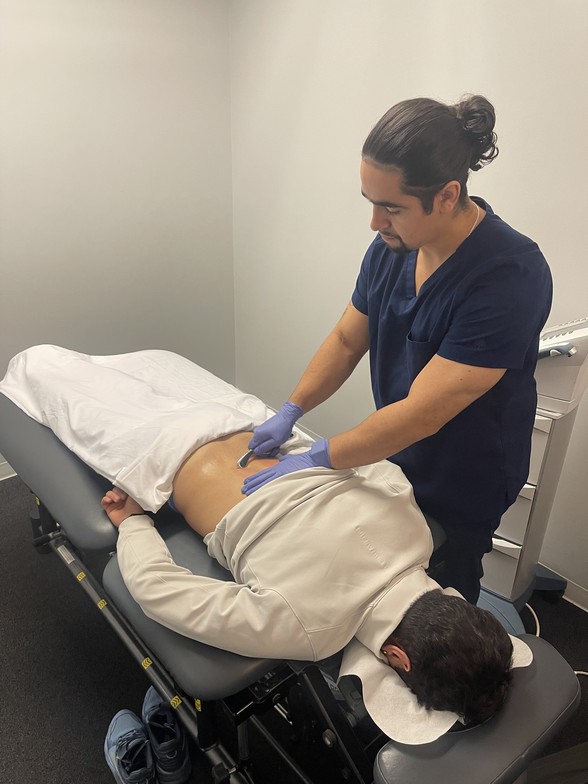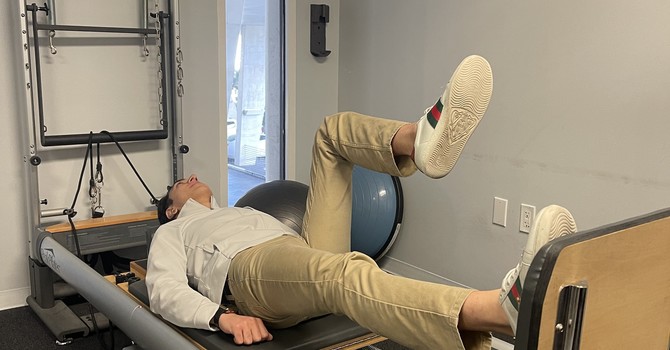
Quick answer: often yes. Disc herniations in the neck or low back can irritate nearby nerves and cause pain, tingling, or weakness. With the right plan, many people calm symptoms, move better, and get back to normal activity without surgery.
Physical Therapy at PT & Chiro of Miami pairs a careful exam with a simple home program so you know what to do, what to avoid, and how to progress safely.
What Is a Herniated Disc
A herniation occurs when the soft center of a spinal disc protrudes and irritates nearby nerves. In the neck, this can cause arm pain or tingling. In the lower back, it can cause leg pain or sciatica. Irritation is influenced by inflammation, motion habits, and how nearby joints and muscles share load.
How Physical Therapy Helps
- Reduce irritation by using positions and movements that open space for the nerve and relieve symptoms.
- Restore motion in the spine, hips, ribs, and shoulders so the spine does not take all the stress.
- Build strength in the core and hips to support daily activity and protect against repeat flare ups.
- Coach posture and pacing so that work, lifting, and training are safer and more comfortable.
- Coordinate care with Chiropractic Care when joint restriction is part of the problem.
What to Expect at PT & Chiro of Miami
- Evaluation: symptom pattern, aggravating positions, neuro screen, motion and strength tests.
- Plan setup: a clear routine you can do daily. Many begin with 2 to 3 visits per week, then taper as symptoms settle.
- Hands-on care as needed: gentle joint and soft tissue work, traction when appropriate.
- Progression: We add range and load in steps that your symptoms can tolerate.
Have low back and hip pain with leg symptoms? See our overview on low back and hip care.
Starter Exercises We Often Use
Lumbar herniation
- Prone press-ups or gentle extension in lying if tolerated
- Hip hinges, glute bridges, and side steps for hip strength
- Nerve glides at low tension to improve tolerance
Cervical herniation
- Chin tucks and cervical retraction
- Scapular setting and light rows
- Median or ulnar nerve glides as appropriate
Important: exercises should reduce or centralize symptoms, not push pain further into the arm or leg. Your exact plan is personalized after an exam.
Home Tips Between Visits
- Use short, frequent movement breaks instead of long periods of sitting.
- Pick a sleep position that calms symptoms. Many prefer side-lying with a pillow between their knees.
- Start with light loads and avoid heavy lifting while symptoms are acute.
- Heat can relax guarded muscles. Ice can calm a flare. Use what feels best for 10 to 15 minutes.
Red flags: seek urgent care for rapidly worsening weakness, new loss of bowel or bladder control, saddle numbness, fever with severe night pain, or recent major trauma.
Common Questions
1. Do I need imaging before I start?
Usually no. We begin with a careful exam. If your case calls for imaging we will coordinate it and review the results with you.
2. Will I need surgery?
Many people improve without surgery. If surgery becomes the best option we can help you prepare and recover well.
3. How soon will I feel better?
Some feel relief in the first couple of weeks. Steady gains build with consistent homework and thoughtful progressions.
Herniated Disc Care in South Beach, Miami
We serve Miami Beach, South Beach, and nearby neighborhoods. Same-week appointments are often available. Start with Physical Therapy, add Chiropractic Care if needed, or contact us with questions.
Dr. Joseph Hudson
Contact Me

